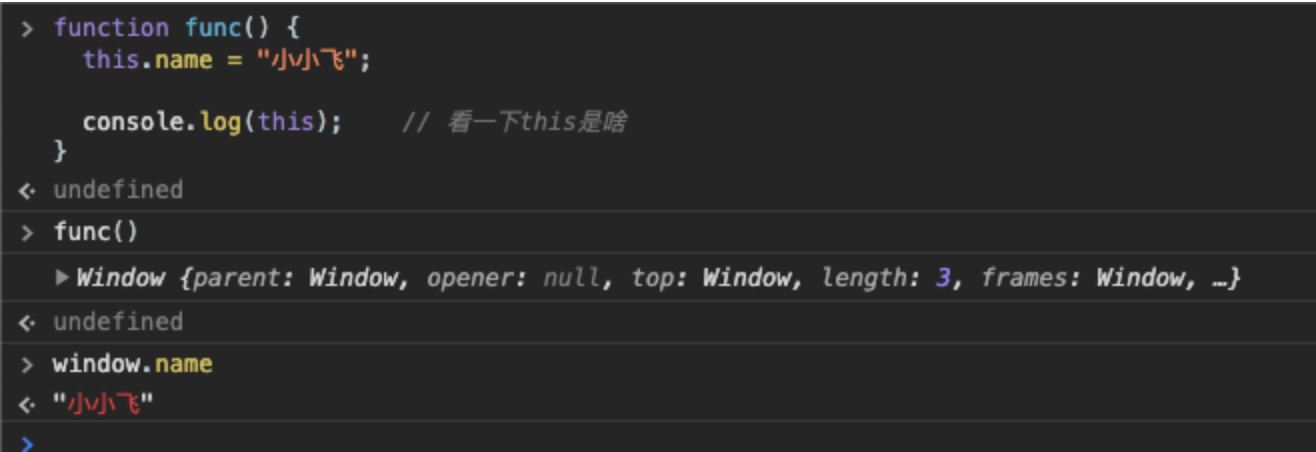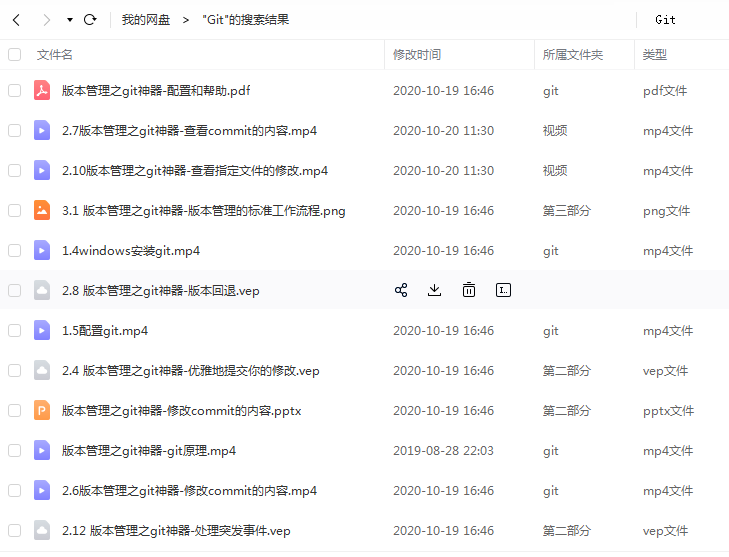深入浅出 CSS-in-JS 工作原理
点上方蓝字关注公众号「前端从进阶到入院」
精选原创好文助你进入大厂
概述
现在的前端开发特别是 React 社区, CSS-in-JS 越来越常见了.
styled-components[1] 凭借着以下几种特性 脱颖而出[2]:
-
它基于 标记模板 [3] 语法 -
以编写 React 组件的形式来定义样式 -
解决 CSS 模块化的问题 -
提供了 CSS 不具备的功能, 比如嵌套 -
上述特性都无需配置
开发者不再需要费尽脑汁去想 CSS 的类名. 那么, 上面所说的种种, 是如何实现的呢?
注意: 如果你不熟悉 styled-components, 请先阅读 这篇文档[4]
魔性语法
我们使用 styled-components 创建一个简单的按钮:
const Button = styled.button`
color: coral;
padding: 0.25rem 1rem;
border: solid 2px coral;
border-radius: 3px;
margin: 0.5rem;
font-size: 1rem;
`;

在线示例[5]
styled.button 只是 styled('button') 的简写, styled 方法接收一个 可用的标签名称[6] 作为参数. 如果你熟悉标记模板的话, 你就会知道, 其实 button 只是一个函数, 可以接收一个字符串数组作为参数. 看一下下面的代码:
const Button = styled('button')([
'color: coral;' +
'padding: 0.25rem 1rem;' +
'border: solid 2px coral;' +
'border-radius: 3px;' +
'margin: 0.5rem;' +
'font-size: 1rem;'
]);
在线示例[7]
现在你可以看到其实 styled 就是一个组件工厂, 我们可以想象一下它是怎么实现的.
重构 styled-components
const myStyled = (TargetComponent) => ([style]) => class extends React.Component {
componentDidMount() {
this.element.setAttribute('style', style);
}
render() {
return (
<TargetComponent {...this.props} ref={element => this.element = element } />
);
}
};
const Button = myStyled('button')`
color: coral;
padding: 0.25rem 1rem;
border: solid 2px coral;
border-radius: 3px;
margin: 0.5rem;
font-size: 1rem;
`;
在线示例[8]
上面的代码实现看起来很简单——myStyled 工厂函数基于给定的标签名创建了一个新的组件, 在组件挂载之后设置行内样式. 但是如果我们的组件样式依赖于某个 props 呢?
const primaryColor = 'coral';
const Button = styled('button')`
background: ${({ primary }) => primary ? 'white ' : primaryColor};
color: ${({ primary }) => primary ? primaryColor : 'white'};
padding: 0.25rem 1rem;
border: solid 2px ${primaryColor};
border-radius: 3px;
margin: 0.5rem;
`;
为了在组件挂载或者组件的 props 更新的时候计算样式中的相关插值, 我们需要更新上面代码的实现:
const myStyled = (TargetComponent) => (strs, ...exprs) => class extends React.Component {
interpolateStyle() {
const style = exprs.reduce((result, expr, index) => {
const isFunc = typeof expr === 'function';
const value = isFunc ? expr(this.props) : expr;
return result + value + strs[index + 1];
}, strs[0]);
this.element.setAttribute('style', style);
}
componentDidMount() {
this.interpolateStyle();
}
componentDidUpdate() {
this.interpolateStyle();
}
render() {
return <TargetComponent {...this.props} ref={element => this.element = element } />
}
};
const primaryColor = 'coral';
const Button = myStyled('button')`
background: ${({ primary }) => primary ? primaryColor : 'white'};
color: ${({ primary }) => primary ? 'white' : primaryColor};
padding: 0.25rem 1rem;
border: solid 2px ${primaryColor};
border-radius: 3px;
margin: 0.5rem;
font-size: 1rem;
`;
在线示例[9]
上述代码最棘手的部分在于如何得到样式字符串:
const style = exprs.reduce((result, expr, index) => {
const isFunc = typeof expr === 'function';
const value = isFunc ? expr(this.props) : expr;
return result + value + strs[index + 1];
}, strs[0]);
我们把所有的字符串片段拼接得到一个一个的 result; 如果某个插值是函数类型, 那么就会把组件的 props 传递给它, 同时调用它.
上面这个简单的工厂看起来很像 styled-components 提供的, 但是实际上 styled-components 的底层实现更加有意思: 它不用内联样式. 让我们走近 styled-components 以了解当导入并且创建组件的时候究竟发生了什么.
styled-components 底层原理
引入 styled-components
当你首次引入 styled-components 库的时候, 它内部会创建一个 counter 变量, 用来记录每一个通过 styled 工厂函数创建的组件.
调用 styled.tag-name 工厂函数
const Button = styled.button`
font-size: ${({ sizeValue }) => sizeValue + 'px'};
color: coral;
padding: 0.25rem 1rem;
border: solid 2px coral;
border-radius: 3px;
margin: 0.5rem;
&:hover {
background-color: bisque;
}
`;
styled-components 创建新组件的同时会给该组件创建一个 componentId 标识符. 代码如下:
counter++;
const componentId = 'sc-' + hash('sc' + counter);
第一个创建的 styled-components 组件的 componentId 为 sc-bdVaJa
一般情况下 styled-components 会使用 MurmurHash[10] 算法创建唯一的标识符, 接着将 哈希值转化为乱序字母组成的字符串[11].
一旦创建好标识符, styled-components 会将 <style> 元素插入到 <head> 内部, 并且插入一条带有 componentId 的注释, 就像下面这样:
<style data-styled-components>
/* sc-component-id: sc-bdVaJa */
</style>
创建好新组件之后, componentId 和 target 都会以静态属性的形式存储于 button 这个组件上:
StyledComponent.componentId = componentId;
StyledComponent.target = TargetComponent;
可以看到, 仅仅创建一个 styled-components 组件, 并不会消耗太多性能. 甚至如果你定义了成百上千的组件而不去使用它们, 你最终得到的也只是一个或多个带有注释的 <style> 元素.
通过 styled 工厂函数创建的组件有个很重要的点: 它们都继承了一个隐藏的 BaseStyledComponents 类, 这个类实现了一些生命周期方法. 让我们看一下.
componentWillMount()
我们给 Button 组件创建一个实例并挂载到页面上:
ReactDOM.render(
<Button sizeValue={24}>I'm a button</Button>,
document.getElementById('root')
);
BaseStyledComponent 组件的 componentWillMount() 生命周期被调用了, 这释放了一些重要信号:
-
解析标记模板: 这个算法和我们实现过的 myStyled工厂很相似. 对于Button组件的实例:
<Button sizeValue={24}>I'm a button</Button>
我们得到了如下所示的 CSS 样式字符串:
font-size: 24px;
color: coral;
padding: 0.25rem 1rem;
border: solid 2px coral;
border-radius: 3px;
margin: 0.5rem;
&:hover {
background-color: bisque;
}
-
生成 CSS 类名: 每个组件实例都会有一个唯一的 CSS 类名, 这个类名也是基于 MurmurHash [12] 算法、 componentId以及evaluatedStyles字符串生成的:
const className = hash(componentId + evaluatedStyles);
所以我们的 Button 实例生成的 className 是 jsZVzX.
之后这个类名会保存到组件的 state 上, 字段名为 generatedClassName.
-
预处理 CSS: 我们使用流行的 CSS 预处理器—— stylis [13], 提取 CSS 字符串:
const selector = '.' + className;
const cssStr = stylis(selector, evaluatedStyles);
下面是 Button 实例最终的 CSS 样式:
.jsZVzX {
font-size: 24px;
color: coral;
padding: 0.25rem 1rem;
border: solid 2px coral;
border-radius: 3px;
margin: 0.5rem;
}
.jsZVzX:hover{
background-color: bisque;
}
-
将 CSS 字符串注入到页面上: 现在可以将 CSS 注入到 <style>标签内部的带有组件标识注释的后面:
<style data-styled-components>
/* sc-component-id: sc-bdVaJa */
.sc-bdVaJa {} .jsZVzX{font-size:24px;color:coral; ... }
.jsZVzX:hover{background-color:bisque;}
</style>
正如你看到的, styled-components 也将 componentId(.sc-bdVaJa) 注入到页面上, 并且没有给 .sc-bdVaJa 定义样式.
render()
当完成 CSS 的相关工作后, styled-components 只需要去创建组件的类名(className)即可:
const TargetComponent = this.constructor.target; // In our case just 'button' string.
const componentId = this.constructor.componentId;
const generatedClassName = this.state.generatedClassName;
return (
<TargetComponent
{...this.props}
className={this.props.className + ' ' + componentId + ' ' + generatedClassName}
/>
);
styled-components 给渲染的元素(TargetComponent)添加了 3 个类名:
-
this.props.className—— 从父组件传递过来的类名, 是可选的. -
componentId—— 一个组件唯一的标识, 但是要注意不是组件实例. 这个类名没有 CSS 样式, 但是当需要 引用其它组件 [14] 的时候, 可以作为一个嵌套选择器来使用. -
generatedClassName—— 具有 CSS 样式的组件的唯一前缀
很棒! 最终渲染出来的 HTML 是这样的:
<button class="sc-bdVaJa jsZVzX">I'm a button</button>
componentWillReceiveProps()
现在让我们尝试着在 Button 组件挂载完成之后更改它的 props. 需要做的是给 Button 组件添加一个交互式的事件:
let sizeValue = 24;
const updateButton = () => {
ReactDOM.render(
<Button sizeValue={sizeValue} onClick={updateButton}>
Font size is {sizeValue}px
</Button>,
document.getElementById('root')
);
sizeValue++;
}
updateButton();
在线示例[15]
你点击一次按钮, componentWillReceiveProps() 会被调用, 并且 sizeValue 会自增, 之后的流程和 componentWillMount() 一样:
-
解析标记模板 -
生成新的 CSS 类名 -
stylis [16] 预处理样式 -
将 CSS 注入到页面上
在多次点击按钮之后查看浏览器开发者工具, 可以看到:
<style data-styled-components>
/* sc-component-id: sc-bdVaJa */
.sc-bdVaJa {}
.jsZVzX{font-size:24px;color:coral; ... } .jsZVzX:hover{background-color:bisque;}
.kkRXUB{font-size:25px;color:coral; ... } .kkRXUB:hover{background-color:bisque;}
.jvOYbh{font-size:26px;color:coral; ... } .jvOYbh:hover{background-color:bisque;}
.ljDvEV{font-size:27px;color:coral; ... } .ljDvEV:hover{background-color:bisque;}
</style>
是的, 所有类只有 font-size 属性不同, 并且无用的 CSS 类都没有被移除. 这是为什么? 因为移除无用的类会增加性能开销, 具体可以看 这篇文章[17].
这里有个小的优化点: 可以添加一个 isStatic 变量, 在 componentWillReceiveProps() 检查这个变量, 如果组件不需要插入样式的话, 直接跳过, 从而避免不必要的样式计算.
性能优化技巧
了解了 styled-components 底层是如何工作的, 之后才能更好的专注于性能优化.
这是一个有彩蛋的 按钮例子[18](提示: 点击按钮超过 200 次, 你会在控制台看到 styled-components 的隐藏信息. 不是开玩笑的哦!😉).
下面就是隐藏的彩蛋:
styled.button 组件生成了超过 200 个类名,
需要频繁更改样式的话,
可以考虑使用 attrs 方法。
Example:
const Component = styled.div.attrs({
style: ({ background }) => ({
background,
}),
})`width: 100%;`
<Component />
重构后的 Button 组件是这样的:
const Button = styled.button.attrs({
style: ({ sizeValue }) => ({ fontSize: sizeValue + 'px' })
})`
color: coral;
padding: 0.25rem 1rem;
border: solid 2px coral;
border-radius: 3px;
margin: 0.5rem;
&:hover {
background-color: bisque;
}
`;
然而, 并不是所有的动态样式都应该采取这种方式. 我自己的规则是对于起伏比较大的数值, 使用 style 属性. 比如:
-
像 word cloud [19] 这种可以高度定制 font-size的组件 -
从服务端获取的具有不同颜色的标签列表
但是, 如果你的按钮是多样化的, 比如 default、primary、warn等, 还是使用样式字符串比较好.
在下面的例子里面, 我使用的是开发版本的 styled-components 包, 而你应该使用速度更快的生产版本. 在 React 项目里面, styled-components 的生产包禁用了很多开发环境下的警告, 这些警告是很重要的, 它使用 CSSStyleSheet.insertRule()[20] 将生成的样式注入到页面上, 但是开发环境下却用了 Node.appendChild()[21]
Evan Scott 在这里[22] 展示了 insertRule 到底有多快。
同时你也可以考虑使用 babel-plugin-styled-components[23] 插件, 它可以压缩并预处理样式文件.
总结
styled-components 的工作流程是很简洁的, 它会在组件渲染之前创建必要的 CSS 样式, 并且在需要解析标签字符串和预处理 CSS 的前提下也足够快.
这篇文章的讲解并没有覆盖到 styled-components 的各个方面, 但是我尽量的去专注于主要的点.
在这篇文章里面, 我使用的 styled-components 版本是 v3.3.3[24]. 在后续的版本中它的源码可能会发生变化.
参考资料
styled-components: https://www.styled-components.com/
[2]脱颖而出: https://github.com/tuchk4/awesome-css-in-js#libraries
[3]标记模板: https://developer.mozilla.org/en-US/docs/Web/JavaScript/Reference/Template_literals#Tagged_templates
[4]这篇文档: https://www.styled-components.com/docs
[5]在线示例: https://jsfiddle.net/gevgeny/r07th16o/?utm_source=website&utm_medium=embed&utm_campaign=r07th16o
[6]可用的标签名称: https://github.com/styled-components/styled-components/blob/v3.3.3/src/utils/domElements.js#L4
[7]在线示例: https://jsfiddle.net/gevgeny/o3zhc7xw/
[8]在线示例: https://jsfiddle.net/gevgeny/dxc6gumn/?utm_source=website&utm_medium=embed&utm_campaign=dxc6gumn
[9]在线示例: https://jsfiddle.net/gevgeny/et4wu96y/?utm_source=website&utm_medium=embed&utm_campaign=et4wu96y
[10]MurmurHash: https://www.wikiwand.com/en/MurmurHash
[11]哈希值转化为乱序字母组成的字符串: https://github.com/styled-components/styled-components/blob/v3.3.3/src/utils/generateAlphabeticName.js#L13
[12]MurmurHash: https://www.wikiwand.com/en/MurmurHash
[13]stylis: https://github.com/thysultan/stylis.js
[14]引用其它组件: https://www.styled-components.com/docs/advanced#referring-to-other-components
[15]在线示例: https://jsfiddle.net/gevgeny/0ezu72Ly/
[16]stylis: https://github.com/thysultan/stylis.js
[17]这篇文章: https://github.com/styled-components/styled-components/issues/1431#issuecomment-358097912
[18]按钮例子: https://jsfiddle.net/gevgeny/0ezu72Ly/
[19]word cloud: https://www.jasondavies.com/wordcloud/
[20]CSSStyleSheet.insertRule(): https://developer.mozilla.org/en-US/docs/Web/API/CSSStyleSheet/insertRule
[21]Node.appendChild(): https://developer.mozilla.org/en-US/docs/Web/API/Node/appendChild
[22]在这里: https://medium.com/styled-components/v3-1-0-such-perf-wow-many-streams-c45c434dbd03
[23]babel-plugin-styled-components: https://www.styled-components.com/docs/tooling#babel-plugin
[24]v3.3.3: https://github.com/styled-components/styled-components/tree/v3.3.3
原文链接: https://medium.com/styled-components/how-styled-components-works-618a69970421
翻译:崩崩老猫
译文:https://www.zhihu.com/people/bu-jing-tong-jsbu-zhao-dui-xiang-81
转载需要联系作者本人授权。
1.喜欢的话别忘了分享、点赞、在看三连哦~。
2.长按下方图片,关注「前端从进阶到入院」,获取我分类整理的原创精选面试热点文章,Vue、React、TS、手写题等应有尽有,我进入字节、滴滴、百度的小伙伴们说文章对他们帮助很大,希望也能帮助到你。
本文分享自微信公众号 - 前端从进阶到入院(code_with_love)。
如有侵权,请联系 support@oschina.cn 删除。
本文参与“OSC源创计划”,欢迎正在阅读的你也加入,一起分享。







